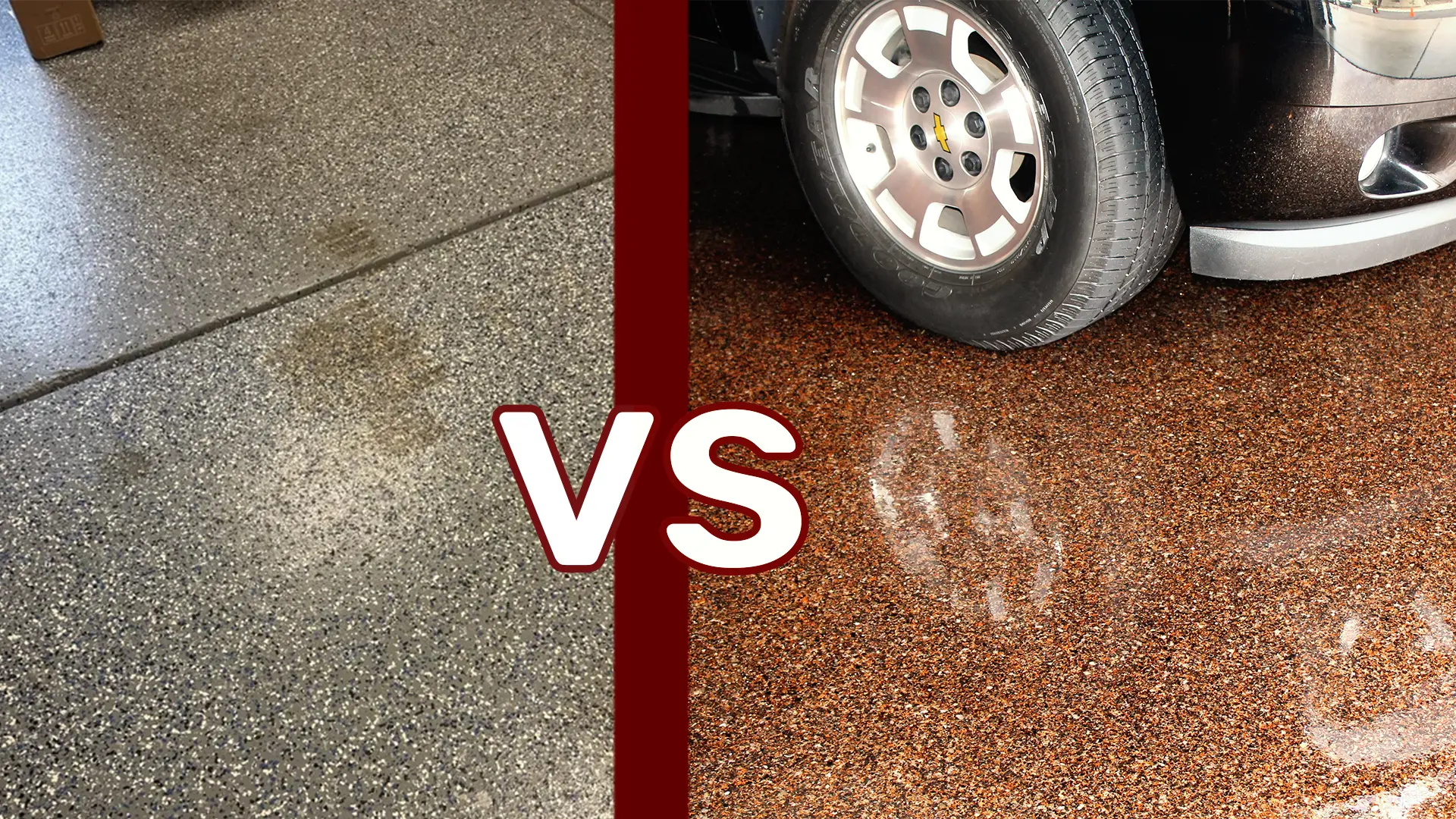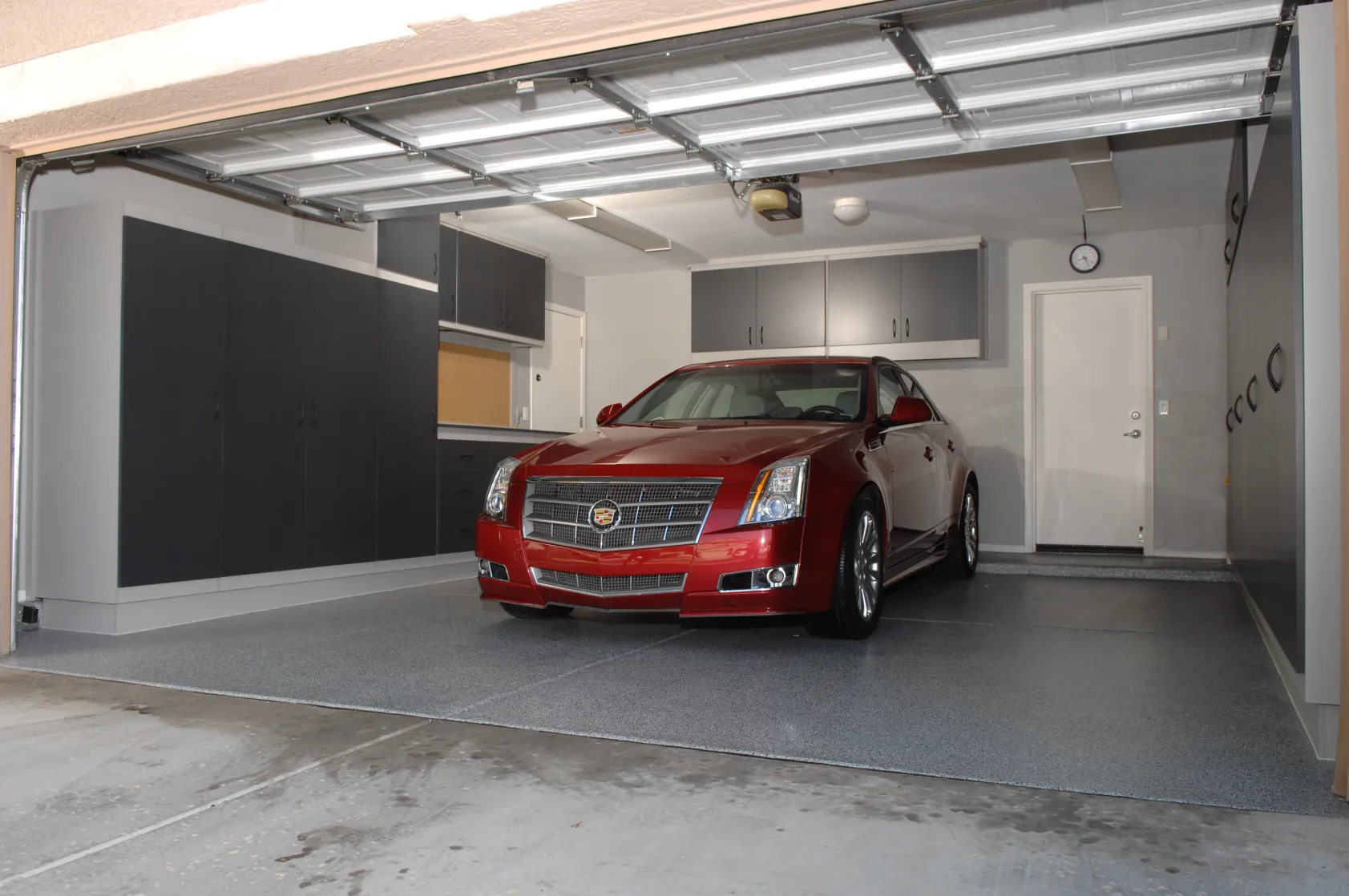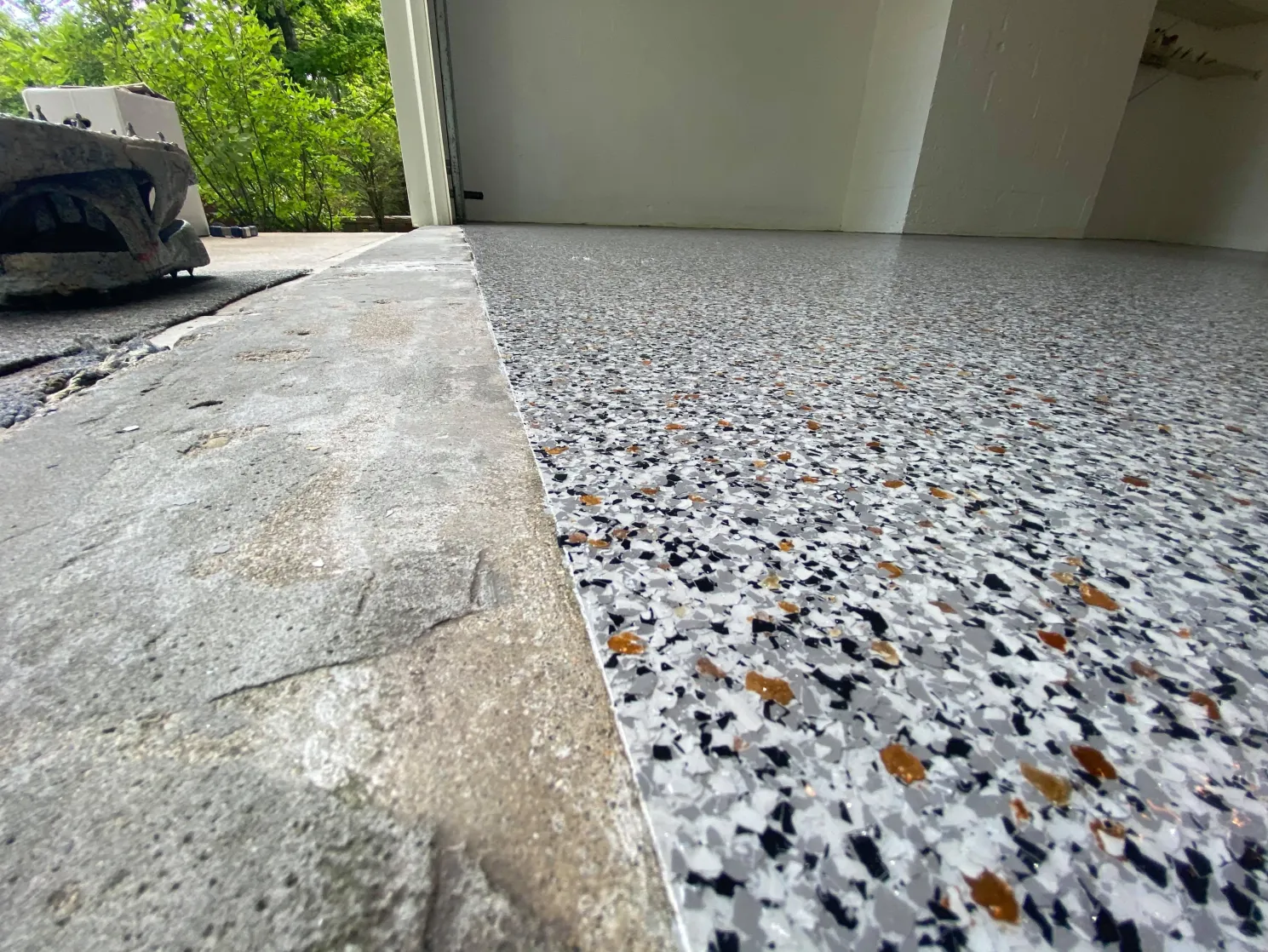What Is Hot-Tire Transfer, and Why Is It a Problem in Colorado Springs?
Car tires contain plasticizers—typically phthalates or other softening agents—to keep the rubber flexible. “Hot-tire transfer” occurs when heated vehicle tires (tires heat up during driving) leach these compounds into the garage floor coating. Over time, this leads to discoloration, tackiness, and even chemical breakdown. In Colorado Springs, where fluctuating temperatures and intense sunlight are common, this problem can be pronounced. The heat from summer pavement combined with cold winter conditions puts stress on low-quality coatings, making them especially vulnerable to hot-tire transfer.
How Does GFC’s Polyaspartic Flooring Prevent Hot-Tire Transfer?
At Garage Floor Coating of the Front Range, we only apply hybrid epoxy and polyaspartic flooring systems in your garage. They’re designed to withstand extreme moisture, UV fading, impacts, and chemical staining…including staining from hot-tire transfer. Our multi-layer system includes:
- Epoxy Base Coat: To the prepared concrete, we apply a doubly thick, moisture-mitigating, 100%-solids epoxy base coat. This thick coat cures slowly (over night) providing deep penetration into the concrete for superior adhesion. It acts as a moisture vapor barrier. While the base coat is still “wet”, we broadcast your chosen flake blend into the coatings in a full-flake spread.
- Two Polyaspartic Topcoats: On the next day, we return to apply two separate, high cross-linking, 100%-solids polyaspartic top coats (not just one like our competitors). The dual quality coatings deliver unparalleled UV, impact, chemical and stain resistance for long-lasting performance.
- Warranty Against Moisture and Hot-Tire Transfer: Unlike most competitors, we stand behind our coating systems and warrant hot-tire transfer and all moisture-related issues.
What Makes GFC’s System Better Than 1-Day Polyaspartic Coatings?
Many companies promote 1-day polyurea or 1-day polyaspartic coatings as a quick and convenient solution, but speed comes at a cost.
1-day systems:
- Use lower-quality, 1:1 ratio, less-than-100%-solids polyaspartics with poor cross-linking density. These products lack the durability to resist hot-tire transfer (which is why some contractors suggest you park your car on vehicle mats!!).
- Use fast-curing polyureas as base coats; they cure so quickly, they don’t deeply penetrate and properly bond with the concrete slab, leading to premature peeling.
- Aren’t warranted against hot-tire transfer or “moisture-related issues” (the number one reasons for coating system failure). This leaves homeowners without protection.
Garage Floor Coating of the Front Range’s hybrid epoxy and polyaspartic flooring system is designed for longevity and durability, ensuring your garage floor remains pristine for years.
Is GFC Polyaspartic Flooring the Right Choice for My Garage?
If you want garage flooring that stands up to the Front Range’s extreme weather and heavy vehicle use, call us. Garage Floor Coating of the Front Range’s hybrid epoxy and polyaspartic flooring provides superior durability, resisting moisture, impacts, chemicals and staining due to hot-tire transfer…and a warranty competitors just don’t offer.
Don’t settle for coatings that won’t last—choose Garage Floor Coating of the Front Range for long-term protection and performance.



